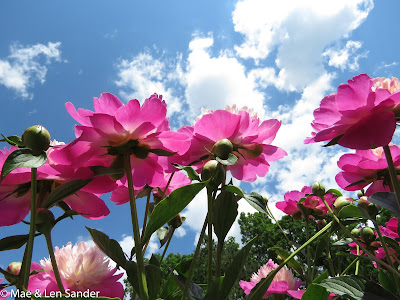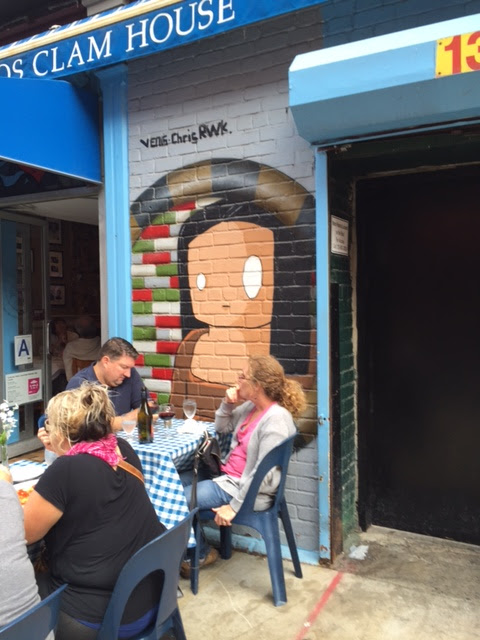 |
| Among Friends, published 1970 |
"Everything was roomy, and the attic seemed to stretch far under the eaves.... There was a smell that I can bring to my mind's eye in a flash, and it is that attic: dust, and the decay of paper and silk and wood; the perfume of exotic vanished bodies once rubbed with rare oils, doused with drops from French bottles, powdered and rouged for roistering." -- M.F.K. Fisher, Among Friends, p. 175.
"Outside the low brown building, with its ample kitchen and its big waxed hall, was a row of the most beautiful geraniums I ever saw in my life. ... Anne and I stood close to them, and smelled the subtle sting of the bruised flesh, a perfume which comes out as it does from the same fleeting touch on a tomato plant or a chrysanthemum." -- p. 137-38.
"Gracie was our maverick... She was strong and mean. She smelled bitter, a perfume which my mother identified for my infatuated nose as garlic, never used or mentioned in our own cuisine." -- p. 201
"We had another secret friend in the early days with Aunt Gwen: her dog, a dignified but mischievous character always called Pat Nettleship and not just Pat, liked Anne and me very much. He had a fine peppery smell." -- p. 253
M.F.K. Fisher, born in 1908, is best known for her earlier food writing -- her
very vivid food writing. As the above quotations illustrate, she also had an amazing talent for describing aromas!
Among Friends, Fisher's memoir of her early life, was mainly published episodically in the New Yorker. In it she describes her childhood in Whittier, California, where her father was the publisher of the local newspaper. At first, the writing in this book seemed a little dated to me, but I quickly began to enjoy the rhythm of the text; the observations of people and their relationships; the distinct memories of her point of view as both a child and later an adult; and the amazing descriptions of food, experiences, people, California scenery and much more.
She includes lots of very pointed remarks about the social stratification of Whittier, where the majority of inhabitants were Quakers who never really accepted her non-Quaker family. One critical remark that I quite liked was about a community cookbook from the Whittier Women's Club, and printed at her father's newspaper shop:
"I have a copy of its cookbook, compiled by the ladies in 1928-29, but almost identical with the one Father's back room turned out in Michigan in 1905. The recipes are just as ineptly phrased, and one senses that many of the most prized ones have deliberately cheated on the Secret Ingredient that had made them locally famous." -- p. 145.
A long and very beautiful memory of Aunt Gwen, a woman that she and her sister Anne were very fond of, was one of my favorite chapters. Aunt Gwen was definitely an influence in developing Fisher's taste in food. For example, "I can't remember any other vegetables than tomatoes and cucumbers at Aunt Gwen's ..., except onions and beets," Fisher writes. "At home we occasionally ate sliced beets in the little vegetable dishes, but they tasted like nothing, not even
red, which of course has several definite flavors." This passage goes on to describe Aunt Gwen's way of preparing beets, of making breaded and fried onions, and of creating a wonderful picnic treat of fried egg sandwiches. But I'm most intrigued by the idea of something tasting
red! You can tell what she means, but who would ever think of it? -- p. 84.
Fisher's parents, her rapidly increasing family of sisters and a brother, her grandmother, and many other close friends, distant neighbors, and school mates are really the center of the book, but it's also full of very enjoyable descriptions of the meals they ate, the homes they lived in, and the way that people lived in California 100 years ago. It's definitely worth reading!


















































